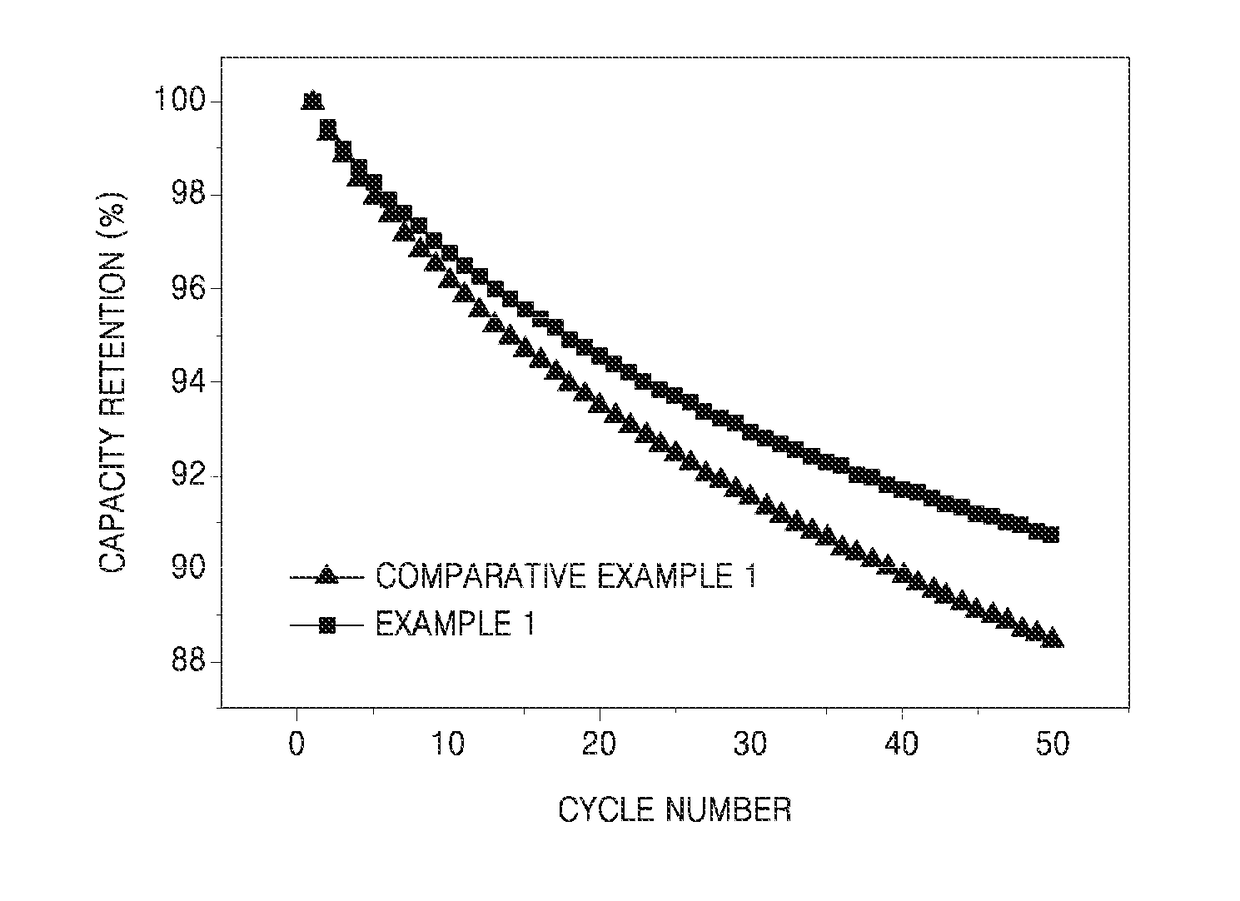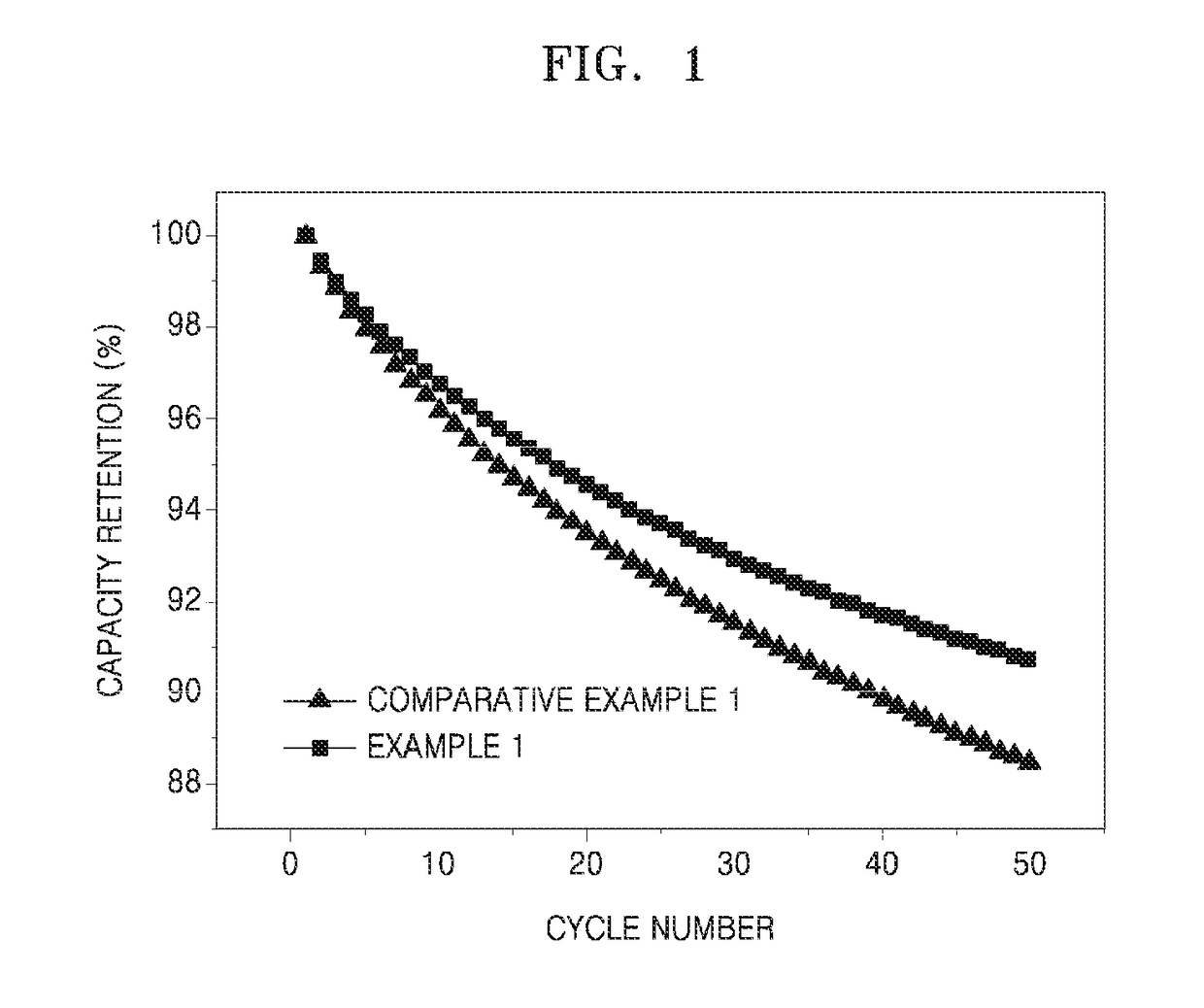Electrolyte for lithium secondary battery and lithium secondary battery comprising same
a lithium secondary battery and lithium secondary battery technology, which is applied in the direction of lithium hexafluorophosphate, lithium compounds, electrochemical generators, etc., can solve the problems of increasing the thickness, dissolution and degeneration unavoidable accompanying of the active material of the electrode, so as to improve the high-temperature charge and discharge efficiency and lifetime characteristics. , the effect of improving the charge and discharge efficiency
- Summary
- Abstract
- Description
- Claims
- Application Information
AI Technical Summary
Benefits of technology
Problems solved by technology
Method used
Image
Examples
example 1
[0049]Ethylene carbonate, ethyl methyl carbonate, and dimethyl carbonate were mixed in a volume ratio of 2:4:4 to prepare an organic solvent. Next, LiPF6 as a lithium salt was dissolved in the organic solvent to obtain a 1.15M LiPF6 mixture solution. Next, 0.5 parts by weight of tetraethylammonium hexafluorophosphate as a solid salt, with respect to 100 parts by weight of the LiPF6 mixture solution, was added, thereby preparing an electrolyte solution.
PUM
| Property | Measurement | Unit |
|---|---|---|
| voltage | aaaaa | aaaaa |
| voltage | aaaaa | aaaaa |
| constant temperature | aaaaa | aaaaa |
Abstract
Description
Claims
Application Information
 Login to View More
Login to View More - R&D
- Intellectual Property
- Life Sciences
- Materials
- Tech Scout
- Unparalleled Data Quality
- Higher Quality Content
- 60% Fewer Hallucinations
Browse by: Latest US Patents, China's latest patents, Technical Efficacy Thesaurus, Application Domain, Technology Topic, Popular Technical Reports.
© 2025 PatSnap. All rights reserved.Legal|Privacy policy|Modern Slavery Act Transparency Statement|Sitemap|About US| Contact US: help@patsnap.com



